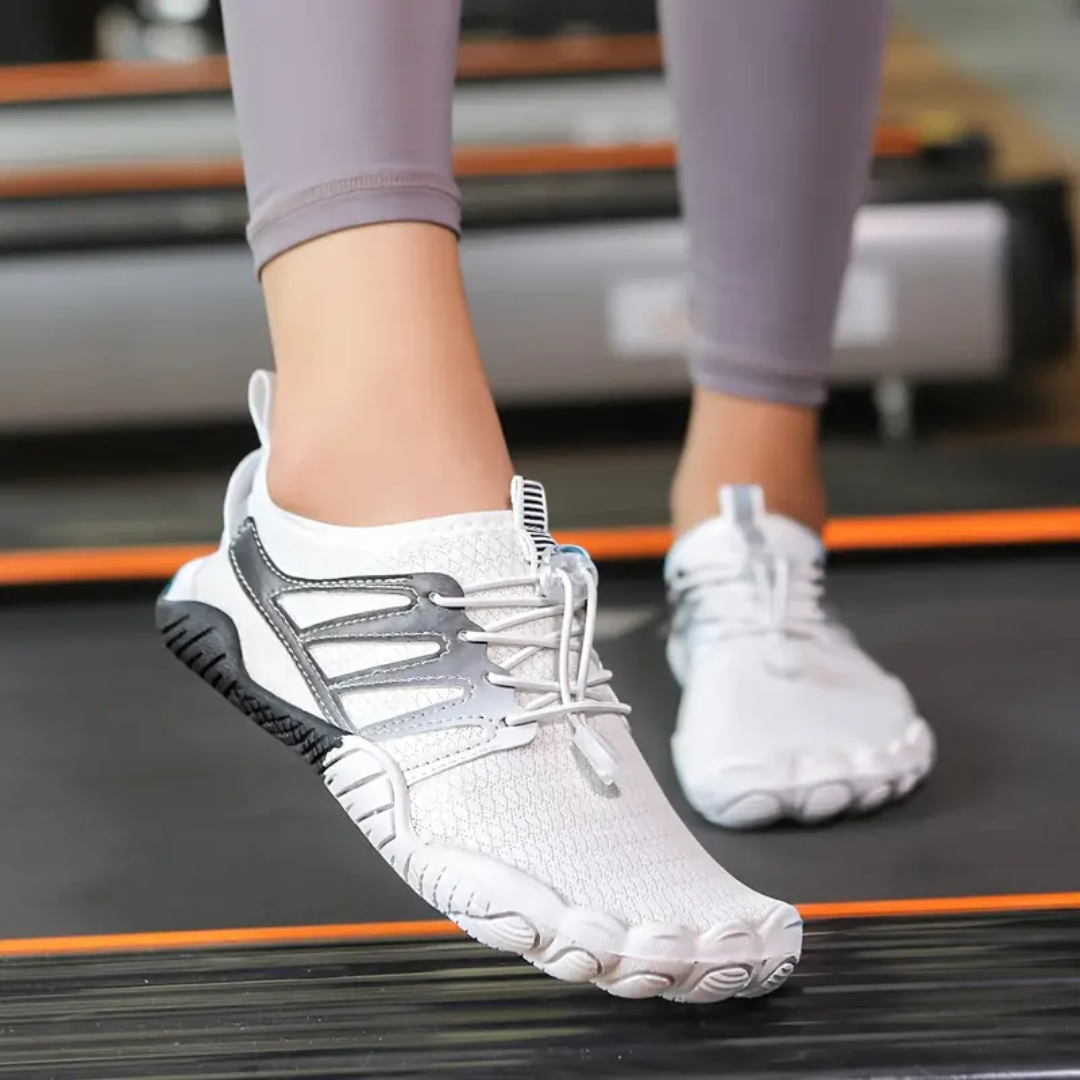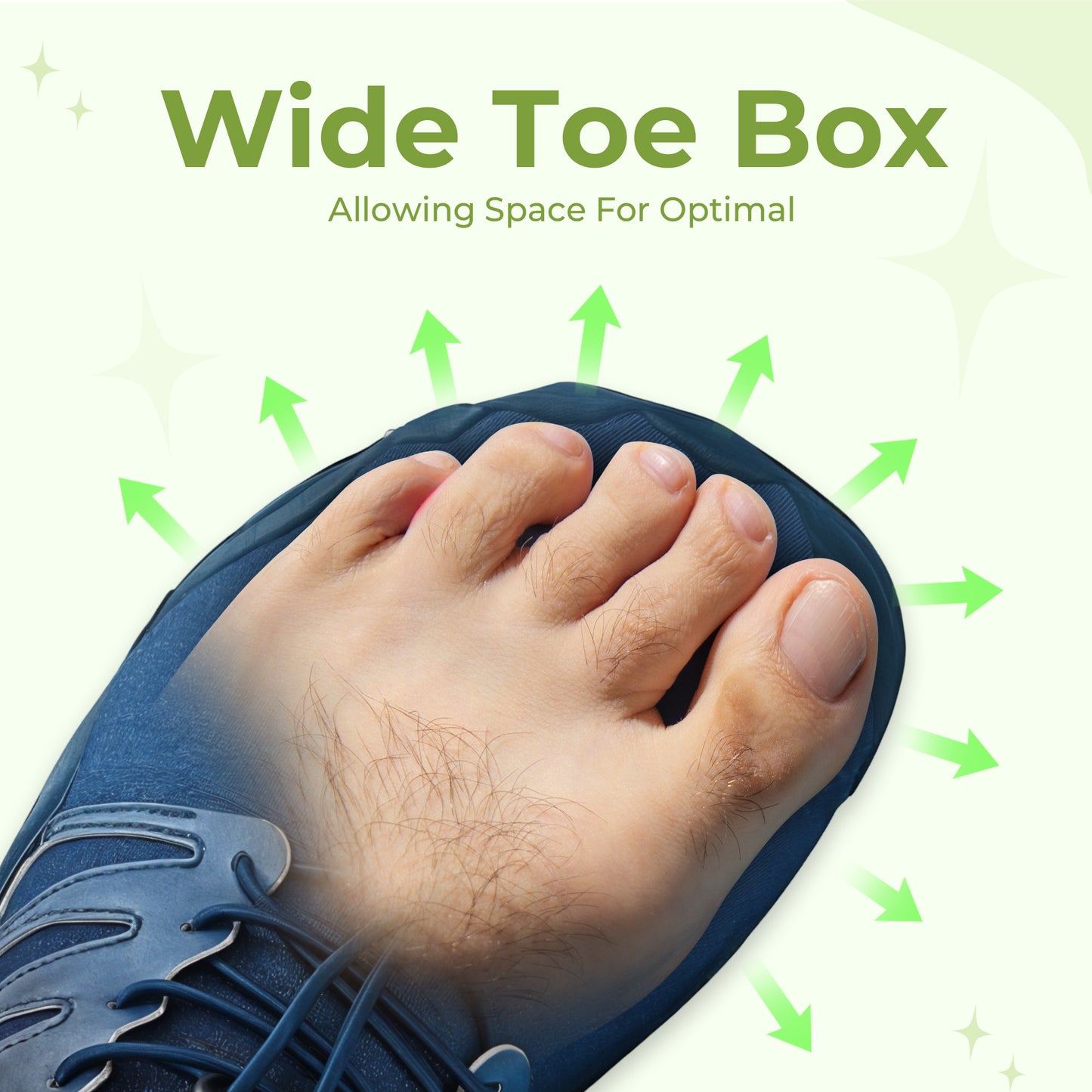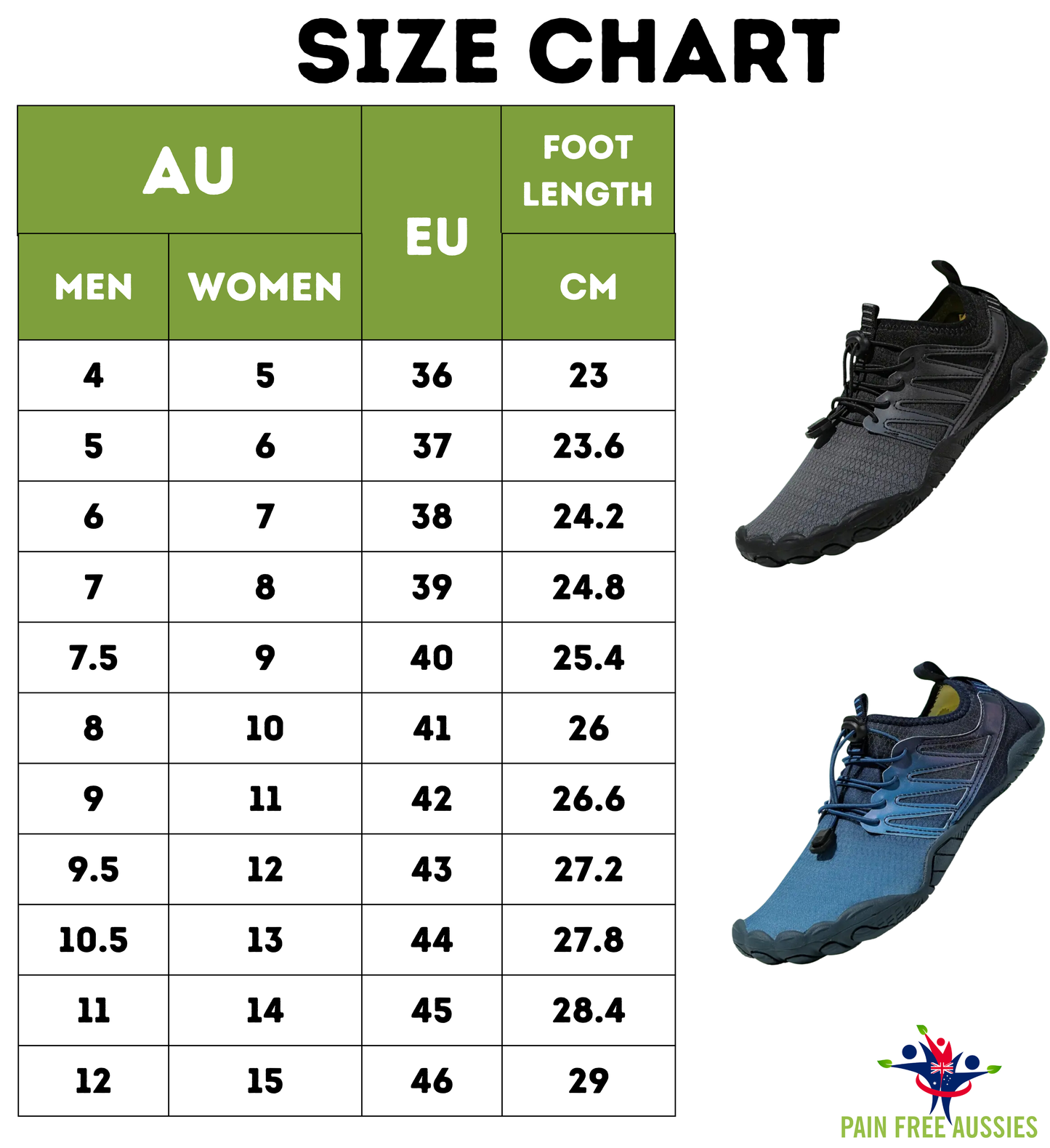Non-Slip Barefoot Shoes for Healthy Feet (Unisex) + Free Shoe Cleaning Brush
Non-Slip Barefoot Shoes for Healthy Feet (Unisex) + Free Shoe Cleaning Brush
✔️ Experience barefoot feel with ultra-thin soles
✔️ Blend of fashion & comfort







Hurry up! Only 2 items left in stock.
Couldn't load pickup availability










See Our Product In Action
Discover True Foot Freedom
Tired of stiff, restrictive shoes that limit your natural movement? Lightweight Barefoot Shoes are designed to mimic the sensation of walking barefoot while offering protection and comfort. Flexible, breathable, and supportive, they’re perfect for those who want a natural walking experience every day.
What Makes It Different?
Unlike bulky traditional shoes, these barefoot shoes feature an ultra-thin 4mm sole that encourages a natural gait. The wide toe box lets your feet spread and relax, improving balance and posture. Made with breathable, lightweight materials, they’re ideal for daily wear, outdoor activities, and multipurpose use. Plus, the outsole includes drainage holes, making them great for hiking, beach walks, or wet environments.
Why Choose Lightweight Barefoot Shoes?
✔️ Ultra-light & flexible design for freedom of movement
✔️ Wide toe box for a natural, relaxed fit
✔️ 4mm sole encourages natural gait & posture
✔️ Breathable material keeps feet cool all day
✔️ Enhances balance, foot strength & flexibility
✔️ Water-draining outsole for hiking & outdoor use
✔️ Multipurpose – suitable for daily wear & activities
FAQ's
What are the shipping charges and how long does shipping take?
Standard deliveries are FREE and take 6 -12working days. Express shipping is available for $6.99 and typically arrives within 4-10 working days.
What is your return policy?
We offer a 30-day return policy from the date of purchase. Items must be in their original condition and packaging. Please contact our customer service to initiate a return.














